Ah, the quest for the perfect cookware that combines convenience, health, and sustainability has led to the rise of non-stick coatings. But what if I told you that there’s a gold standard in the world of non-stick cookware, one that stands for both safety and quality? Enter LFGB-compliant non-stick coatings, a game-changer in the kitchenware industry. Let’s dive into why these coatings are not just a trend but a necessity for any modern kitchen.
The Benefits of LFGB Compliant Non-Stick Coatings
LFGB compliant non-stick coatings offer a myriad of benefits that enhance both the cooking experience and the longevity of kitchenware. Here’s a closer look at why these coatings are a game-changer in the world of cookware.
Firstly, the non-stick properties of LFGB compliant coatings reduce the need for excessive oil or butter, making it easier to prepare healthier meals. This is particularly beneficial for those watching their calorie intake or managing dietary restrictions, as it allows for the preparation of dishes with less fat.
Secondly, these coatings are incredibly easy to clean. The non-stick surface prevents food from sticking, making it simple to scrape off any residue. This not only saves time but also reduces the amount of elbow grease required when washing dishes.
Moreover, LFGB compliant non-stick coatings are designed to withstand high temperatures without peeling or releasing harmful chemicals. This means that you can cook a wide range of dishes, from searing steaks to baking pastries, without worrying about the coating breaking down.
Another advantage is the even heat distribution that these coatings provide. The non-stick surface allows heat to be evenly distributed across the pan, which is essential for achieving perfect results in cooking and baking. No more hot spots that can burn your food or leave it undercooked.
The safety aspect is paramount with LFGB compliant coatings. The LFGB (German Food, Drug, and Cosmetics Act) is one of the strictest regulations in the world, ensuring that non-stick coatings do not contain harmful substances like PFOA (perfluorooctanoic acid) or PFOS (perfluorooctane sulfonic acid). This means that when you use cookware with LFGB compliant non-stick coatings, you can be confident that your family is not exposed to potentially toxic chemicals.
Additionally, these coatings are durable and resistant to scratches and abrasions. This longevity means that your non-stick cookware can last for years, providing a cost-effective solution for your kitchen needs.
The non-stick nature of LFGB compliant coatings also makes them ideal for cooking delicate foods like eggs or fish. The surface allows these foods to be flipped effortlessly without breaking, resulting in a more enjoyable and less stressful cooking experience.
Furthermore, the ease of cooking with non-stick coatings can encourage experimentation in the kitchen. With less fear of sticking or burning, cooks may feel more inclined to try new recipes and techniques, which can lead to a more diverse and exciting culinary journey.
Lastly, the eco-friendly aspect of LFGB compliant non-stick coatings cannot be overlooked. By reducing the amount of oil used, these coatings contribute to a lower carbon footprint and less waste. Plus, the durability of the cookware means fewer items end up in landfills, making them a sustainable choice for environmentally conscious consumers.
In summary, LFGB compliant non-stick coatings bring a host of advantages to the table, from health benefits to ease of use and environmental considerations. Whether you’re a seasoned chef or a novice cook, these coatings can elevate your cooking experience and keep your kitchen looking and working like new for years to come.
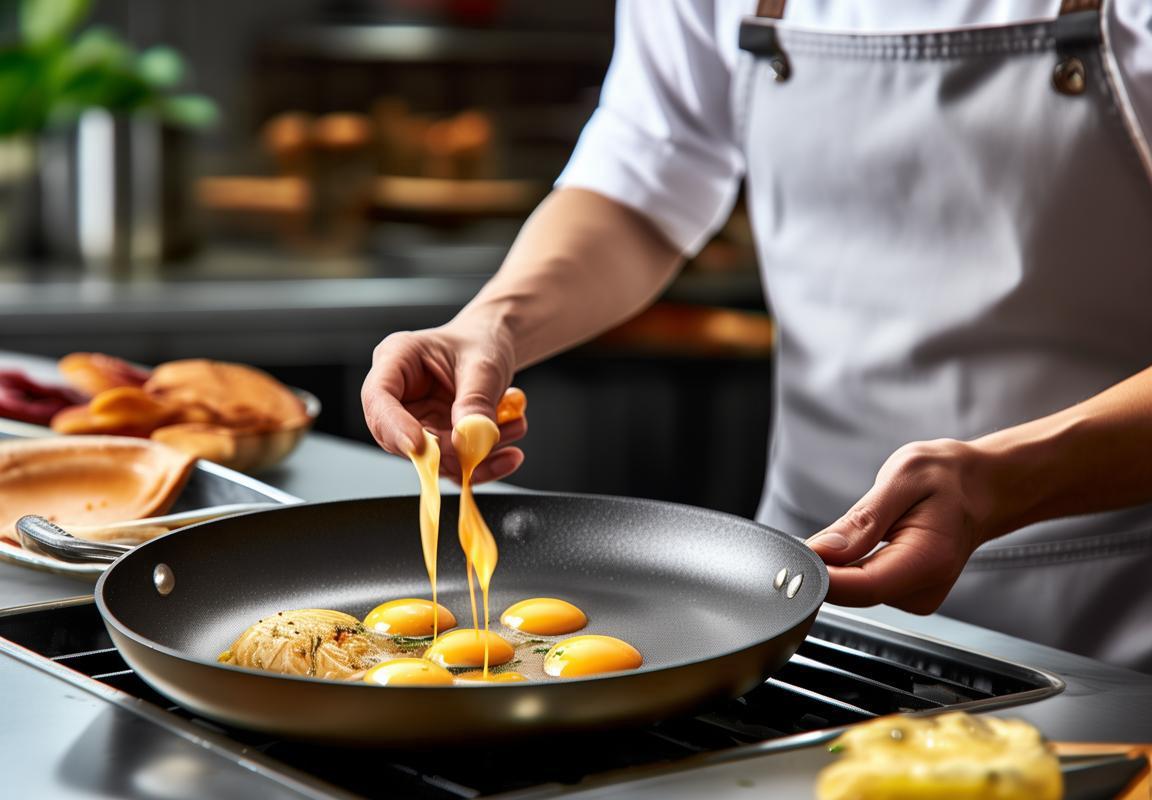
What is LFGB and Why It Matters
LFGB, or the Lebensmittel- und Futtermittelbetrugsgesetz, is a German law that sets stringent standards for food and feed safety. This comprehensive legislation is a cornerstone of the European Union’s food safety framework and is widely recognized across the globe. Its significance lies not only in Germany but also in countries that import goods from the European market, as it ensures a high level of food safety and quality.
The LFGB covers a broad spectrum of regulations, from the production process to the labeling of products. It encompasses everything from the handling of raw materials to the final product’s packaging, aiming to prevent food fraud and ensure that consumers receive products that are safe to consume. One of the key aspects of the LFGB is the establishment of maximum levels for contaminants such as heavy metals, pesticides, and mycotoxins, which are strictly monitored to protect public health.
One of the reasons LFGB is so crucial is its focus on preventive measures. Unlike some other regulations that might rely heavily on post-market controls, the LFGB emphasizes the importance of adhering to strict hygiene practices throughout the entire supply chain. This means that manufacturers must ensure that their facilities, equipment, and processes are designed to minimize the risk of contamination from the very beginning.
The law also mandates that food and feed products must meet specific quality standards. This includes the use of approved additives and ingredients, as well as the control of microbiological, chemical, and physical contaminants. The LFGB is not just about the final product; it also regulates the conditions under which food is stored, transported, and distributed, ensuring that it remains safe for consumption throughout its journey to the consumer.
For companies operating within the European Union, compliance with LFGB is a legal requirement. However, for those outside the EU, it can be a competitive advantage. By adhering to these standards, businesses can demonstrate their commitment to food safety, which can be a significant selling point in markets that prioritize safety and quality.
The LFGB also addresses the issue of labeling, ensuring that consumers are provided with accurate and transparent information about the products they are purchasing. This includes details on ingredients, nutritional values, and any potential allergens, which is essential for individuals with specific dietary requirements or allergies.
In terms of enforcement, the LFGB is backed by strict penalties for non-compliance. This can range from fines to the recall of products from the market, which serves as a powerful deterrent for manufacturers and suppliers to meet the standards set by the law.
Internationally, the LFGB has influenced the development of similar regulations in other countries. The fact that it is recognized and respected globally highlights its role as a benchmark for food safety and quality. For example, the United States’ Food and Drug Administration (FDA) often references the LFGB when establishing its own regulations, showing the law’s impact on a global scale.
The LFGB’s influence extends beyond just food safety. It has also had an impact on the broader food industry, leading to innovations in food processing and packaging that enhance safety and longevity. This includes the development of new techniques for sterilization and preservation, as well as the use of materials that are less likely to leach harmful substances into food.
In conclusion, the LFGB is a critical piece of legislation that sets the stage for food safety and quality. Its comprehensive approach to food production and distribution ensures that consumers can trust the products they purchase, no matter where they are in the world. The law’s emphasis on prevention, quality control, and transparency makes it a model for other countries to emulate, and its influence is felt far beyond the borders of Germany.
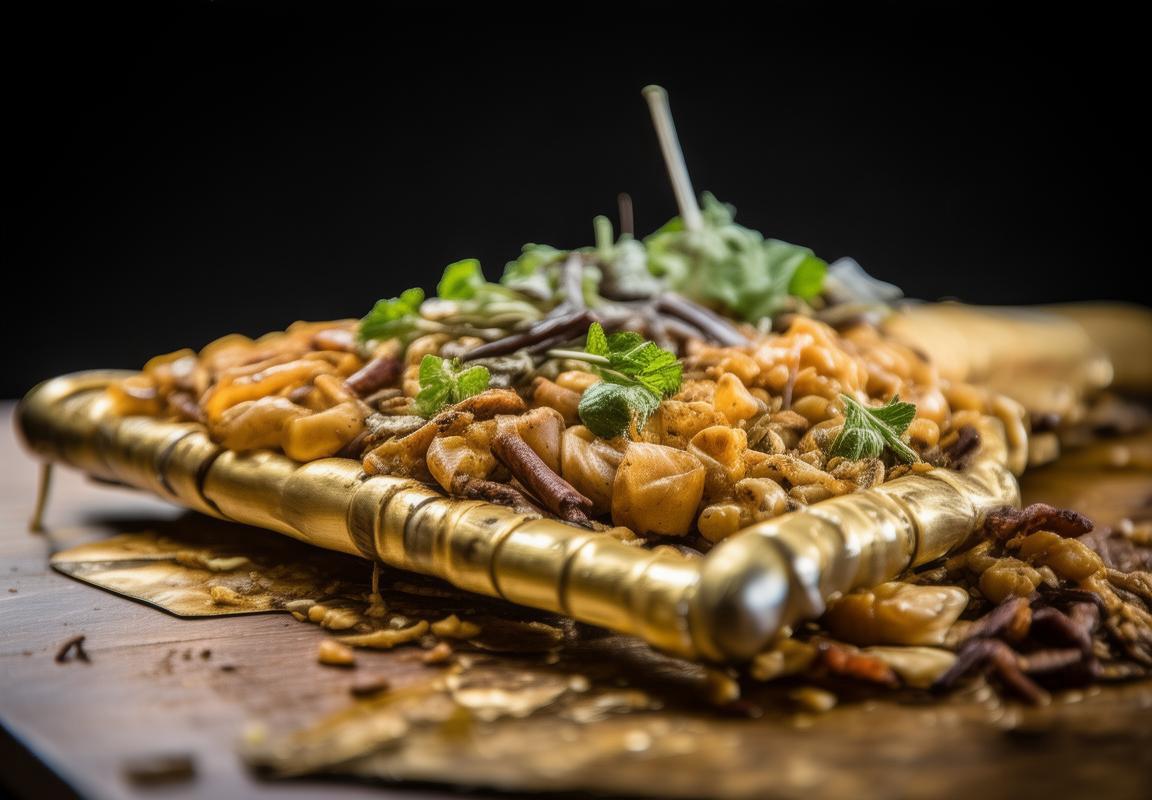
Understanding Non-Stick Coatings: A Brief Guide
Non-stick coatings have revolutionized the way we cook, making our lives easier and our kitchens more efficient. To truly appreciate the impact of these coatings, it’s important to understand what they are and how they work. Here’s a brief guide to non-stick coatings:
-
What They Are Made Of Non-stick coatings are typically made from a type of polymer called polytetrafluoroethylene (PTFE), commonly known by the brand name Teflon. This material is applied to the surface of cookware to create a non-reactive, slippery layer that reduces the need for oil or butter when cooking.
-
How They Work The non-stick property comes from the chemical structure of PTFE. It has a very low coefficient of friction, which means that food does not stick to it. This is because the surface repels water and oil, preventing food from adhering to the pan.
-
Types of Non-Stick Coatings There are several types of non-stick coatings available. The most common is PTFE, but there are also coatings like PTFE-free alternatives like ceramic, silicone, and anodized aluminum. Each type has its own advantages and disadvantages, but they all share the goal of making cooking easier.
-
Cooking with Non-Stick Pans When using non-stick pans, it’s important to remember that they are not completely non-stick. Overheating can damage the coating, and certain types of food, like sticky sauces or caramel, can still stick. To prevent sticking, use the right amount of heat, avoid metal utensils, and never use the pan for cooking at high temperatures.
-
The Importance of even Heat Distribution A good non-stick coating should provide even heat distribution across the cooking surface. This ensures that your food cooks evenly and reduces the risk of burning. Pans with thicker coatings and multiple layers often offer better heat retention and distribution.
-
Durability of Non-Stick Coatings The longevity of a non-stick coating depends on how well it is maintained. Regular cleaning with gentle dish soap and a soft sponge can help preserve the coating. Avoid abrasive cleaners and steel wool, as these can scratch the surface and lead to premature wear.
-
The Environmental Impact While non-stick coatings have made cooking more convenient, they are not without environmental concerns. PTFE, for example, is a persistent organic pollutant that can be harmful if it gets into the environment. However, many manufacturers are now offering PTFE-free alternatives that are more eco-friendly.
-
Health Considerations There have been some concerns about the potential health risks associated with non-stick coatings, particularly when they are overheated. PTFE can release toxic gases if heated above 500°F (260°C), which is well above the cooking temperatures typically used. However, modern non-stick coatings are designed to be much safer, and they are tested to ensure they do not release harmful substances at normal cooking temperatures.
-
Cleaning and Maintenance Tips To keep your non-stick coating in good condition, always wash the pan by hand. Avoid using the dishwasher, as the harsh chemicals and high heat can damage the coating. Also, it’s important to dry the pan immediately after washing to prevent water spots and rust.
-
Choosing the Right Non-Stick Cookware When shopping for non-stick cookware, consider the type of cooking you do most often. If you’re a heavy user of non-stick pans, you might want to invest in a high-quality, thicker coating that can withstand more wear and tear. For those looking for eco-friendly options, PTFE-free coatings like ceramic or silicone might be the better choice.
-
The Future of Non-Stick Technology As technology advances, we can expect to see more innovative non-stick coatings that are even safer, more durable, and more environmentally friendly. Researchers are continually working on new materials and manufacturing processes to improve the performance and longevity of non-stick cookware.
-
Conclusion Non-stick coatings have become an integral part of modern cooking, offering convenience and ease of use. By understanding how they work, maintaining them properly, and choosing the right cookware, you can enjoy the benefits of non-stick technology without compromising on safety or quality.
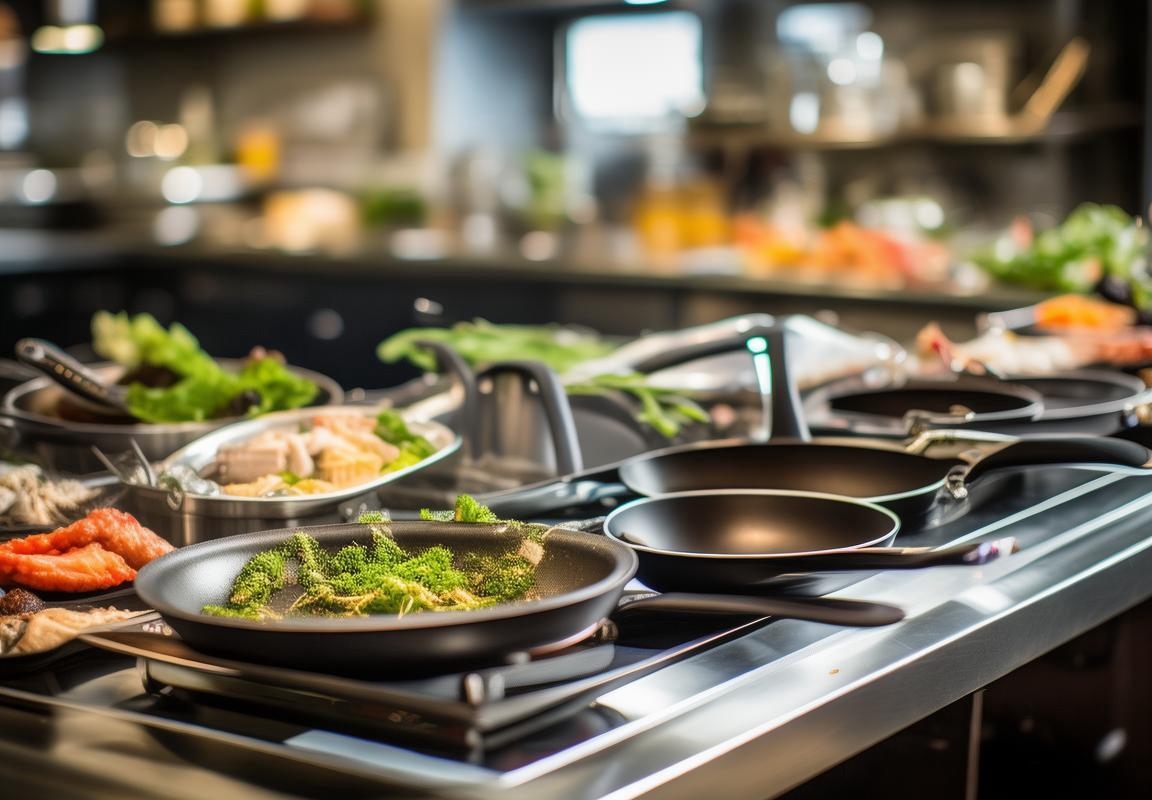
The Role of Non-Stick Coatings in Kitchenware
Non-stick coatings have revolutionized the way we cook, offering a range of benefits that make kitchen tasks more manageable and enjoyable. Here’s a closer look at the role these coatings play in kitchenware:
Cooking EfficiencyNon-stick coatings, typically made from materials like PTFE (polytetrafluoroethylene), eliminate the need for excessive oil or butter, which not only reduces calorie intake but also makes it easier to cook healthier meals. The smooth surface prevents food from sticking, allowing ingredients to release easily, which means less time spent on cleaning and more time on enjoying the cooking process.
Ease of CleaningOne of the most appreciated features of non-stick coatings is their ease of cleaning. With these coatings, spills and food residue often wipe off with a simple swipe, reducing the time and effort required to maintain kitchenware. This is particularly beneficial for those who prefer quick cleanups or have limited time to dedicate to dishes after a meal.
Versatility in Cooking TechniquesNon-stick coatings are versatile, allowing for a variety of cooking techniques. Whether you’re sautéing, frying, or baking, the non-stick surface ensures that your food cooks evenly without the risk of burning. This versatility means you can experiment with different recipes and cooking styles without worrying about your cookware being a limiting factor.
Health BenefitsThe health benefits of non-stick coatings are significant. By reducing the amount of oil needed for cooking, these coatings can help lower the overall fat content of meals. This is especially important for individuals following specific dietary guidelines or looking to improve their heart health through a lower-fat diet.
Reduced Risk of Food ContaminationThe non-stick surface is not just beneficial for the cookware; it also minimizes the risk of food contamination. The smooth surface is less likely to harbor bacteria or food particles, making it a safer choice for preparing meals. This is particularly relevant for those with food allergies or sensitivities, as it reduces the chance of cross-contamination.
Durability and LongevityNon-stick coatings are designed to be durable, but it’s important to note that they are not indestructible. With proper care, these coatings can last for many years. The durability of non-stick cookware means that it can be a long-term investment, saving you money on frequent replacements.
Enhanced FlavorBecause non-stick coatings prevent food from sticking, they also prevent ingredients from burning, which can lead to a smoky or charred flavor. This means that your food will retain its natural flavor and texture, enhancing the overall dining experience.
Eco-Friendly CookingNon-stick coatings can also contribute to a more eco-friendly cooking routine. By requiring less oil, they can help reduce the environmental impact of cooking. Additionally, many non-stick cookware sets are designed to be energy-efficient, as they distribute heat evenly, reducing the need for high heat settings.
Cooking Demonstrations and RecipesThe non-stick nature of these coatings has made them popular in cooking demonstrations and recipes. Chefs and home cooks alike often use non-stick cookware to showcase their skills and experiment with new recipes, knowing that the cookware will perform well without the hassle of food sticking.
Adaptability to Different Cooking StylesNon-stick coatings are not just for the traditional stove-top cookware. They have been adapted for various types of kitchenware, including bakeware, grill pans, and even electric skillets. This adaptability means that you can enjoy the benefits of non-stick technology across a wide range of cooking appliances and settings.
Safety ConsiderationsWhile non-stick coatings are generally safe, there are some safety considerations to keep in mind. For instance, high temperatures can cause the coating to degrade, potentially releasing harmful chemicals. It’s important to follow the manufacturer’s guidelines regarding maximum safe temperatures to ensure the longevity of the coating and the safety of the cookware.
In conclusion, non-stick coatings have become an integral part of modern kitchenware for their ability to improve cooking efficiency, ease of cleaning, health benefits, and versatility. Whether you’re a seasoned chef or a novice in the kitchen, the role of non-stick coatings is undeniable, making cooking not only easier but also more enjoyable.
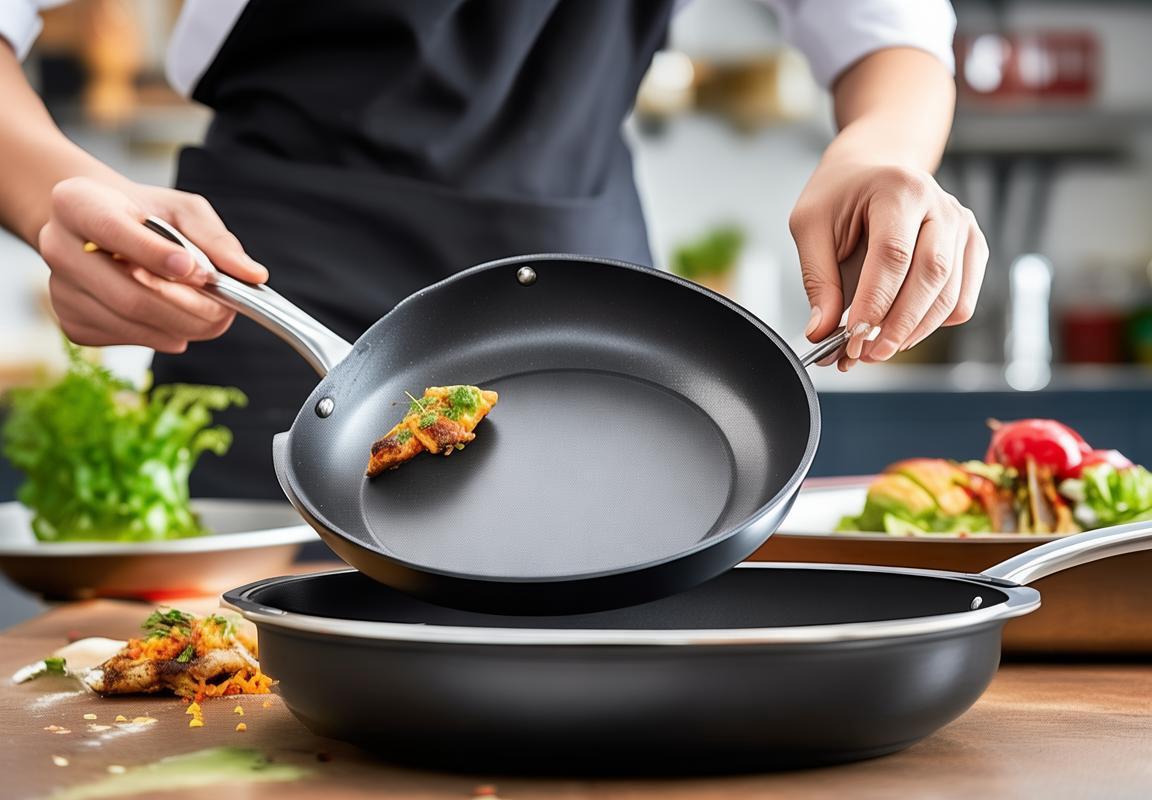
Why Choose LFGB Compliant Coatings?
Choosing LFGB compliant coatings for your kitchenware isn’t just a matter of adhering to regulations; it’s about making an informed decision that impacts your health, the environment, and the longevity of your cookware. Here’s why these coatings stand out:
-
Enhanced Safety: LFGB compliance ensures that the non-stick coatings are free from harmful substances like PFOA (perfluorooctanoic acid), PFOA-related chemicals, and other toxic elements that can leach into your food. This means you can cook with peace of mind, knowing that your meals are not contaminated with potentially harmful chemicals.
-
Longevity: The non-stick coatings that meet LFGB standards are designed to withstand high temperatures and regular use without degrading. This durability means your cookware will last longer, saving you money in the long run and reducing the need for frequent replacements.
-
Health Benefits: Foods cooked in LFGB compliant non-stick cookware require less oil, which can lead to healthier meals with fewer calories. This not only benefits your waistline but also reduces the environmental impact of disposing of used cooking oil.
-
Easy Cleanup: The non-stick properties of LFGB compliant coatings make cleanup a breeze. Whether you’re dealing with stubborn food particles or a spilled sauce, these coatings help prevent sticking, making the post-cooking process less of a hassle.
-
Environmentally Friendly: By choosing LFGB compliant coatings, you’re also making a choice that aligns with eco-friendly practices. The longevity of the cookware means fewer items end up in landfills, and the reduced use of oil in cooking can contribute to a decrease in the environmental footprint.
-
Consumer Trust: LFGB certification is widely recognized and respected, especially in Europe. By opting for LFGB compliant coatings, you’re not just choosing a product; you’re investing in a brand that has passed stringent safety tests and adheres to high standards.
-
Versatility: Non-stick coatings that meet LFGB standards are suitable for a variety of cooking methods, including induction, electric, and gas cooktops. This versatility means you can use the same set of cookware for different types of cooking, making your kitchen more efficient.
-
Compliance with International Standards: LFGB, which stands for Lebensmittel- und Bedarfsgegenstände Gesetze (German for “Law on Food and Consumer Goods”), is a set of regulations that mirrors many of the world’s highest safety standards. By choosing LFGB compliant coatings, you’re ensuring that your cookware meets the same rigorous standards as those in other countries.
-
Peace of Mind: In today’s world, where health and safety concerns are at the forefront, having cookware with LFGB compliant coatings offers a level of reassurance that standard non-stick coatings might not provide. Knowing that your cookware is free from harmful chemicals and meets stringent safety criteria can be incredibly comforting.
-
Improved Cooking Experience: With a non-stick surface that performs consistently, you can enjoy a more enjoyable cooking experience. No more scraping at stubborn food or dealing with the frustration of burnt dishes. LFGB compliant coatings ensure that your cookware is a pleasure to use.
-
Investment in Quality: Choosing LFGB compliant coatings is an investment in quality. These coatings are not only safer and more durable but also contribute to a higher-quality cooking experience. The price tag might be slightly higher, but the benefits in terms of health, longevity, and ease of use often outweigh the initial cost.
In conclusion, the decision to choose LFGB compliant coatings for your kitchenware is one that pays off in numerous ways. From enhanced safety and health benefits to environmental considerations and the peace of mind that comes with using high-quality, certified cookware, the choice is clear. It’s about making a smart, sustainable, and health-conscious decision that will serve you well in the kitchen for years to come.
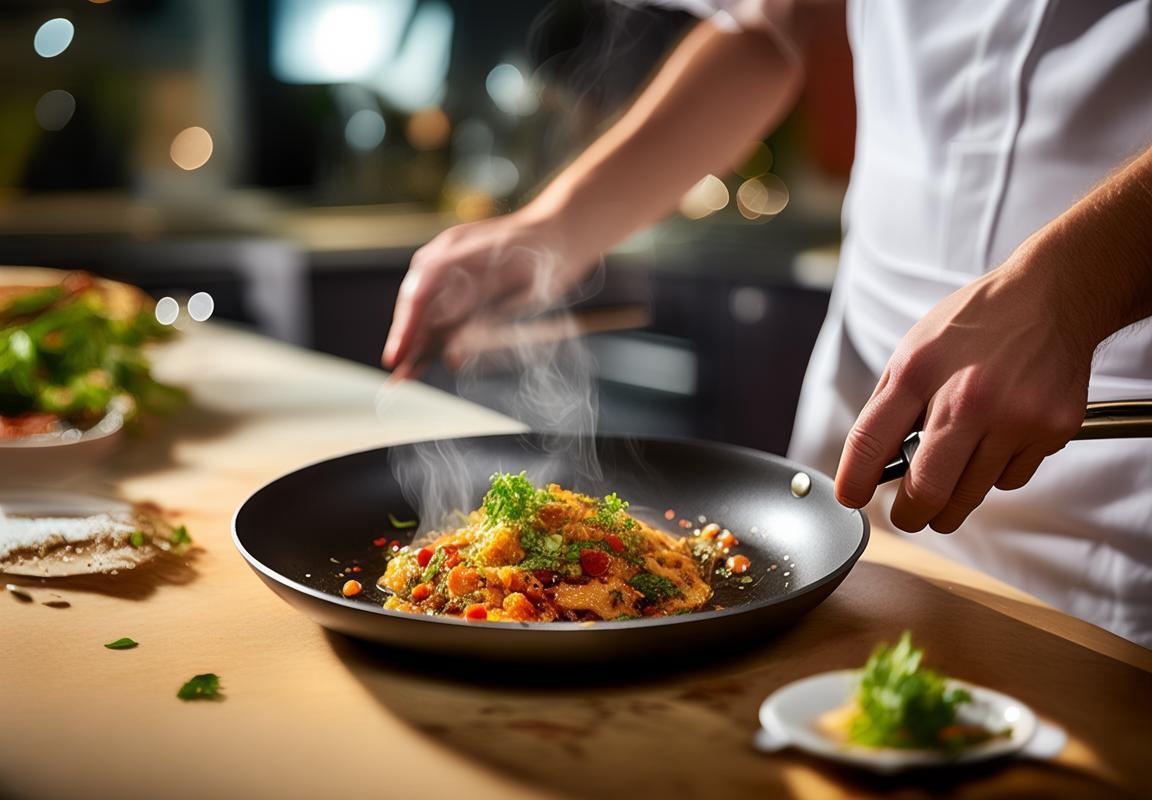
How LFGB Compliance Ensures Safety and Quality
Non-stick coatings have become an integral part of kitchenware, making cooking easier and more enjoyable. However, the quality and safety of these coatings are paramount. This is where LFGB compliance comes into play, ensuring that the coatings we use are not only effective but also safe for our health and the environment. Let’s delve into how LFGB compliance guarantees both safety and quality in non-stick coatings.
LFGB stands for Lebensmittel- und Bedarfsgegenstände (Food and Consumer Goods) Gesetz, which is a German regulation that sets stringent standards for food contact materials. These standards are designed to protect consumers from harmful substances that might leach into food and beverages. Compliance with LFGB means that the non-stick coatings adhere to these strict guidelines, ensuring that they are safe to use in kitchenware.
One of the key aspects of LFGB compliance is the limitation of heavy metals. Heavy metals like lead, cadmium, and mercury can be toxic when ingested, especially in small amounts. LFGB compliant non-stick coatings are rigorously tested to ensure that these harmful elements are present in negligible quantities, minimizing the risk of contamination.
The use of PFAS (perfluoroalkyl substances) in non-stick coatings has been a subject of concern due to their potential health risks. PFAS are known to be persistent in the environment and can accumulate in the human body over time. LFGB compliant coatings must meet strict limits for PFAS, reducing the exposure risk to consumers.
Another critical aspect of LFGB compliance is the evaluation of the coating’s migration properties. This refers to the amount of coating material that can leach into food during normal use. LFGB sets a low migration limit, which means that the non-stick coating must not release significant amounts of chemicals into the food, maintaining the integrity and safety of the meal.
Quality assurance is also a cornerstone of LFGB compliance. The standard requires that manufacturers undergo regular audits and inspections to ensure that their products meet the required safety standards. This ongoing monitoring helps to maintain the quality of non-stick coatings throughout their lifecycle, from production to the consumer’s kitchen.
The use of LFGB compliant coatings in kitchenware goes beyond safety; it also contributes to the overall quality of the product. These coatings are designed to last, providing a durable non-stick surface that can withstand regular use without wearing down. This longevity is a testament to the quality of the materials used and the manufacturing process that adheres to LFGB standards.
Moreover, LFGB compliant non-stick coatings are often free from PFOA (perfluorooctanoic acid), a chemical that has been linked to various health issues. The absence of PFOA in these coatings not only makes them safer for consumers but also supports a more sustainable approach to manufacturing, as PFOA is a persistent organic pollutant that can harm the environment.
In terms of performance, LFGB compliant non-stick coatings are designed to be easy to clean and maintain. They reduce the need for excessive oil or butter, making cooking healthier and less time-consuming. The non-stick nature of these coatings also allows for healthier cooking methods, such as grilling and steaming, which can help reduce the calorie content of dishes.
When it comes to the environment, LFGB compliant coatings are generally more sustainable. They are designed to be more durable, which means they last longer and reduce the need for frequent replacement. This not only saves consumers money but also reduces the amount of kitchenware ending up in landfills.
In conclusion, LFGB compliance in non-stick coatings is a guarantee of safety and quality. It ensures that the coatings are free from harmful substances, have low migration rates, and are produced to high standards. Choosing LFGB compliant coatings for kitchenware not only protects your health but also supports sustainable practices and contributes to the overall quality of your cooking experience.
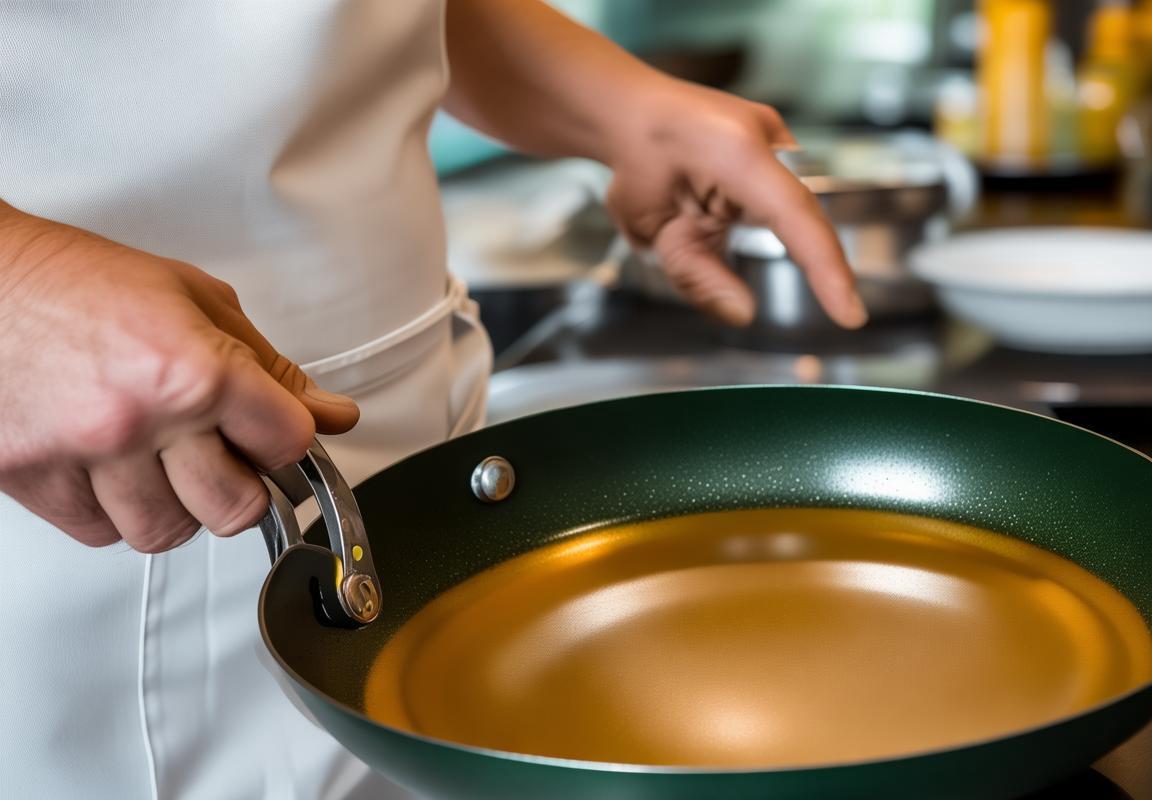
The Advantages of Non-Stick Cookware with LFGB-Approved Coatings
Non-stick cookware has become a staple in kitchens around the world, and for good reason. When you choose non-stick cookware with LFGB-approved coatings, you’re not just buying a convenient cooking tool; you’re investing in safety, durability, and health. Here are some of the key advantages that come with LFGB-compliant non-stick coatings:
-
Healthier Cooking: The primary benefit of non-stick coatings is the health aspect. These coatings reduce the need for excessive oil or butter, which can cut down on calories and unhealthy fats in your meals. Whether you’re following a diet or simply trying to cook healthier, LFGB-approved non-stick cookware can help you achieve your goals.
-
Easy Food Release: One of the hallmarks of non-stick cookware is its ability to prevent food from sticking to the surface. This means less cleanup for you after cooking. With LFGB-compliant coatings, the non-stick properties are enhanced, ensuring that even delicate dishes like eggs or fish can be cooked without the risk of them sticking to the pan.
-
Even Heat Distribution: High-quality non-stick coatings are designed to distribute heat evenly across the cooking surface. This is crucial for achieving consistent cooking temperatures, which can prevent hot spots and burning. LFGB compliance ensures that the materials used in these coatings are not only non-stick but also provide even heat distribution.
-
Durability: Non-stick cookware with LFGB-approved coatings tends to be more durable than those without such certifications. The adherence of the coating to the base material is improved, which means your pan can withstand more use before the non-stick properties start to degrade. This longevity can be particularly appealing for those who prefer to invest in fewer but higher-quality pieces.
-
Safety: LFGB, or the German Food, Drug, and Cosmetics Act, is a stringent set of regulations that ensures the safety of consumer products, including cookware. The LFGB certification means that the non-stick coatings used are free from harmful substances like PFOA (perfluorooctanoic acid) and PTFE (polytetrafluoroethylene), which can be found in some cheaper non-stick coatings and have been linked to health concerns.
-
Ease of Cleaning: The non-stick nature of LFGB-compliant cookware means that cleaning is a breeze. Food particles don’t stick to the surface, so you can simply wipe out the pan with a damp cloth or use a non-abrasive sponge. This not only saves time but also reduces the risk of food particles being scrubbed into the pan, which can lead to discoloration and odors over time.
-
Versatility: Cookware with LFGB-approved non-stick coatings can be used for a variety of cooking methods, including frying, sautéing, and boiling. The non-stick surface allows for healthier cooking and can be particularly useful when cooking sticky or delicate foods. Whether you’re making pancakes, stir-fries, or steaming vegetables, these pans can handle it all.
-
Longevity: Due to the enhanced durability and safety of LFGB-compliant non-stick coatings, these cookware sets can last for years. The absence of harmful chemicals means that the pan will not degrade quickly or leach toxic substances into your food, which is a concern with some non-stick cookware over time.
-
Environmental Considerations: Choosing non-stick cookware with LFGB-approved coatings also supports environmental responsibility. The longevity of these products means fewer are ending up in landfills, and the absence of harmful substances reduces the potential for environmental contamination.
-
Peace of Mind: Knowing that your non-stick cookware is LFGB-compliant offers peace of mind. You can enjoy the convenience and health benefits of non-stick cooking without the worry of exposing yourself or your family to potentially harmful chemicals.
In summary, the advantages of non-stick cookware with LFGB-approved coatings are clear. They offer a healthier cooking experience, ease of use, durability, safety, and environmental benefits. For those looking to invest in cookware that will stand the test of time and provide a safe cooking environment, LFGB-compliant non-stick coatings are a wise choice.
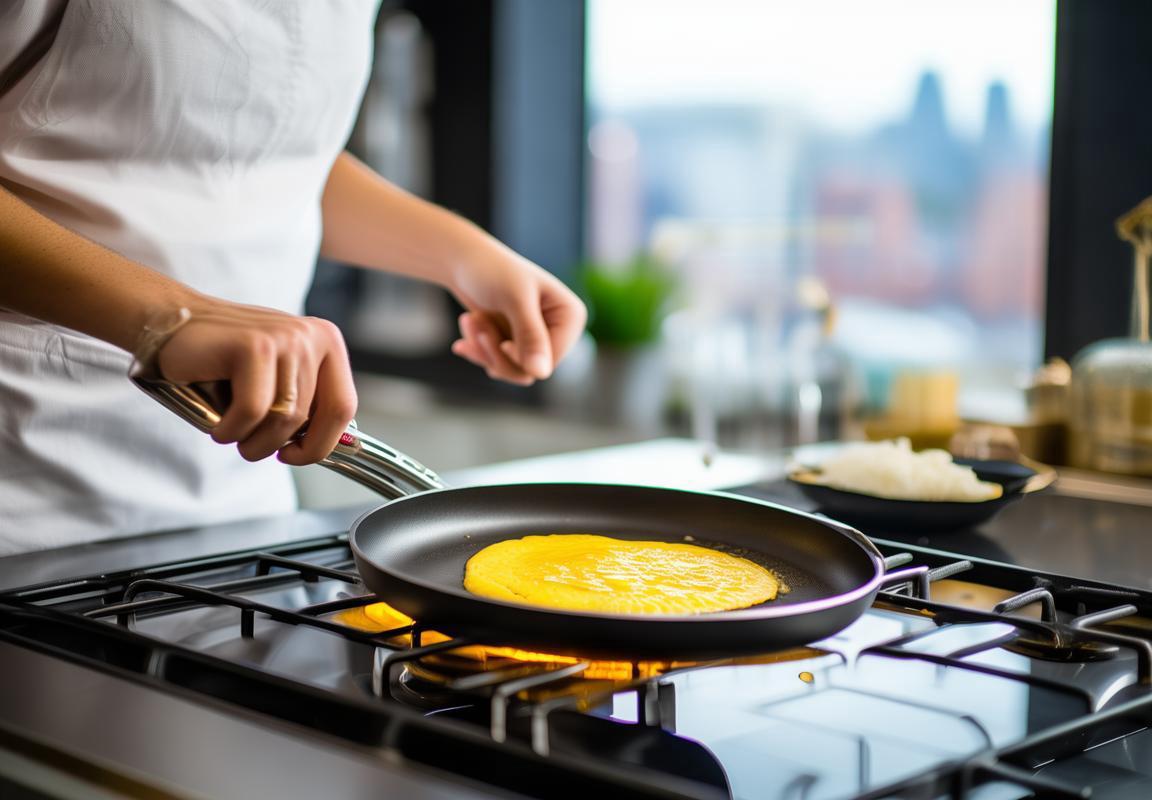
Practical Tips for Maintaining LFGB Compliant Non-Stick Cookware
Caring for your LFGB-compliant non-stick cookware is a straightforward process, but it’s important to follow certain guidelines to ensure its longevity and maintain its non-stick properties. Here are some practical tips to keep your non-stick pots and pans in tip-top shape:
-
Avoid Metal Utensils: The non-stick coating can be scratched by metal utensils, so opt for silicone, wooden, or plastic spoons, spatulas, and whisks. These materials won’t harm the surface and will help preserve the non-stick qualities.
-
Low to Medium Heat: Non-stick cookware is designed to be used at lower temperatures, which means you can reduce energy consumption and prevent the coating from breaking down. Keep the heat on a low to medium setting unless you’re searing meat or cooking something that requires a higher temperature.
-
Don’t Preheat on High: It’s tempting to preheat your pan on high before adding oil, but doing so can cause the non-stick coating to degrade rapidly. Instead, heat the pan on a low setting until it’s warm to the touch, then add a small amount of oil to coat the surface.
-
Use the Right Oil: While non-stick cookware is great for reducing the need for oil, it’s still beneficial to use a small amount. Opt for oils with high smoke points, like olive oil or coconut oil, as they won’t burn at lower cooking temperatures.
-
Avoid Abrasive Cleaning: Harsh chemicals and abrasive scrubbers can damage the non-stick coating. Stick to a soft sponge or cloth for cleaning, and if you need a little extra scrubbing power, use a non-abrasive cleaner.
-
Don’t Put in the Dishwasher: The dishwasher can be too harsh on non-stick cookware. The high temperatures and harsh detergents can wear down the coating over time. Hand wash your cookware with warm, soapy water instead.
-
Be Gentle with Scratches: If you notice minor scratches on your non-stick surface, they can be cleaned with a little elbow grease and a gentle abrasive cleaner. However, avoid using steel wool or harsh pads, as these can cause permanent damage.
-
Allow to Cool Before Washing: Hot cookware can warp and cause the non-stick coating to bubble or peel. Always let your pans cool down before washing to prevent these issues.
-
Use the Right Size Lid: Ensure that the lid fits your pan snugly. A loose lid can allow steam to escape, which can damage the non-stick coating over time.
-
Clean Spills Immediately: If food or grease spills onto your non-stick cookware, wipe it up right away. Leftover food particles can burn and become difficult to clean, potentially damaging the coating.
-
Store Properly: When storing your non-stick cookware, avoid stacking pots and pans. This can cause the non-stick coating to rub off on other items. If you need to stack them, place a paper towel or soft cloth between them to prevent direct contact.
-
Be Mindful of PTFE and PFOA: The non-stick coatings are made with substances like PTFE (Teflon) and PFOA. While these chemicals are generally safe, they can be harmful if overheated or if the coating is scratched and the particles are ingested. Always follow the manufacturer’s guidelines for safe use.
By following these practical tips, you can extend the life of your LFGB-compliant non-stick cookware and ensure that it remains a safe and effective tool in your kitchen. Remember, the key is gentle care and responsible use to maintain the integrity of the non-stick coating.

Eco-Friendly and Sustainable Non-Stick Coatings
Non-stick coatings have long been a favorite in the kitchen for their ability to reduce sticking and make cooking a breeze. But have you ever wondered about the environmental impact of these coatings? In this section, we delve into the eco-friendly and sustainable aspects of non-stick coatings, exploring why they matter and how they contribute to a greener world.
Manufacturers are increasingly aware of the environmental concerns surrounding non-stick coatings, particularly those containing harmful substances like PFOA (perfluorooctanoic acid). To address these issues, many have turned to eco-friendly alternatives that are not only safe for the consumer but also for the planet. Here’s a closer look at the sustainable features of these coatings:
-
Biodegradable Materials: One of the key factors in making non-stick coatings eco-friendly is the use of biodegradable materials. These materials break down naturally over time, reducing the burden on landfills and minimizing the long-term environmental impact.
-
Recyclable Coatings: Some non-stick coatings are designed to be recyclable, allowing consumers to dispose of their cookware responsibly. This means that at the end of its life cycle, the coating can be separated from the cookware and processed for recycling, further reducing waste.
-
Reduced Energy Consumption: The use of eco-friendly non-stick coatings often involves manufacturing processes that require less energy. This not only reduces the carbon footprint of the product but also contributes to a lower overall energy demand.
-
Safe for Aquatic Life: Traditional non-stick coatings can leach harmful chemicals into waterways, affecting aquatic life. Sustainable coatings, on the other hand, are designed to be safe for both marine ecosystems and human health, preventing pollution and protecting wildlife.
-
Minimal Use of Toxic Substances: Sustainable non-stick coatings avoid the use of toxic substances such as PFOA and PTFE (polytetrafluoroethylene), which have been linked to various health issues. By using safer alternatives, these coatings help prevent the release of harmful chemicals into the environment.
-
Longevity and Durability: Eco-friendly coatings are not just about the environment; they’re also about the longevity of the product. These coatings are designed to last longer, which means fewer replacements and less waste over time.
-
Promotion of Sustainable Practices: The shift towards eco-friendly non-stick coatings encourages consumers to adopt more sustainable practices in their daily lives. It raises awareness about the importance of choosing environmentally responsible products and can inspire broader changes in consumer behavior.
-
Global Initiatives: Many manufacturers are aligning with global initiatives aimed at reducing the environmental impact of non-stick coatings. This includes participating in certifications that ensure products meet strict environmental standards and contributing to the development of new, sustainable technologies.
-
Consumer Choice: As more consumers become environmentally conscious, there’s a growing demand for eco-friendly non-stick coatings. This demand drives innovation and encourages companies to invest in sustainable alternatives, leading to a wider range of options for consumers.
-
Research and Development: The push for sustainable non-stick coatings has led to significant research and development in the field. This ongoing effort ensures that the products we use in our kitchens are not only safe but also environmentally friendly.
In conclusion, the move towards eco-friendly and sustainable non-stick coatings is a crucial step in reducing the environmental impact of kitchenware. By choosing products that are free from harmful substances, made from biodegradable materials, and designed for longevity, consumers can contribute to a healthier planet without compromising on the convenience and performance of their cookware.
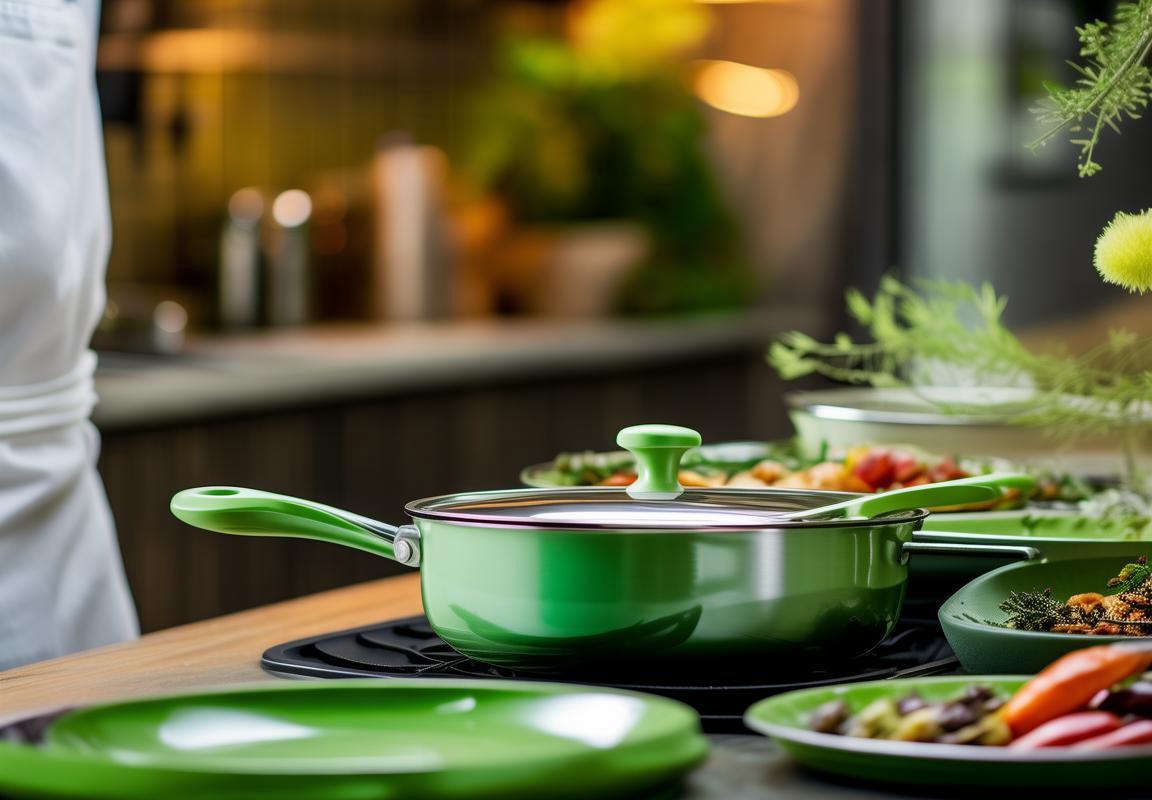
The Future of Non-Stick Cookware: Innovations and Trends
Non-stick cookware has been a staple in kitchens worldwide for decades, but as awareness of environmental and health concerns grows, the future of non-stick cookware is evolving. Innovations and trends are shaping the industry, offering more sustainable and user-friendly options. Here’s a glimpse into the future of non-stick cookware.
Traditional non-stick coatings, often made with perfluorooctanoic acid (PFOA), have come under scrutiny due to health risks. However, advancements in technology have led to the development of alternative coatings that are not only safer but also more eco-friendly. One such innovation is the use of plant-based oils and minerals in creating non-stick surfaces.
The use of plant-based oils, like rapeseed or coconut oil, in non-stick coatings is a significant step towards sustainability. These oils are biodegradable and renewable, reducing the environmental footprint of cookware. Additionally, the production of these oils is often more energy-efficient than that of petrochemicals used in older non-stick coatings.
Mineral-based coatings, such as ceramic or titanium, are also gaining popularity. These coatings are non-toxic, durable, and can withstand higher temperatures than traditional PFOA coatings. They offer a non-stick surface that doesn’t degrade over time, ensuring that the cookware remains safe and effective.
Another trend in non-stick cookware is the move towards more durable and scratch-resistant materials. Cookware with a reinforced non-stick surface can last longer, reducing the need for frequent replacements. This not only saves money but also minimizes waste, which is a crucial factor in sustainability.
Smart technology is also playing a role in the future of non-stick cookware. Smart cookware with integrated temperature sensors and timers can help prevent overheating and burning, which are common issues with traditional non-stick pans. This technology not only improves cooking outcomes but also extends the life of the cookware by reducing wear and tear.
The rise of eco-conscious consumers is driving demand for sustainable cookware. Companies are responding by offering a wider range of products that cater to environmental concerns. This includes cookware made from recycled materials, which helps reduce the carbon footprint associated with manufacturing.
In terms of design, non-stick cookware is becoming more stylish and versatile. The days of basic, utilitarian cookware are giving way to sleeker, more modern designs that can enhance the aesthetic of any kitchen. Cookware with non-stick coatings is now available in a variety of colors and finishes, allowing consumers to choose pieces that complement their kitchen decor.
The packaging of non-stick cookware is also changing. Companies are increasingly using recycled and recyclable materials for packaging, reducing the amount of waste that ends up in landfills. This shift reflects a broader industry commitment to sustainability.
As the world becomes more aware of the impact of plastics on marine life, non-stick cookware without plastic parts is becoming a sought-after option. Cookware made from stainless steel, glass, or other non-plastic materials is gaining popularity for its durability and eco-friendliness.
The future of non-stick cookware is also tied to the foodservice industry. Restaurants and commercial kitchens are looking for sustainable and cost-effective solutions to reduce their environmental impact. Non-stick cookware that meets these criteria can lead to significant energy and resource savings over time.
Lastly, the focus on health and wellness is influencing the development of non-stick coatings. New coatings are being formulated to release fewer potentially harmful chemicals into the food, ensuring that what’s on the inside is just as safe as what’s on the outside.
In conclusion, the future of non-stick cookware is bright, with a host of innovations and trends pointing towards a more sustainable, durable, and health-conscious approach to cooking. As technology continues to advance, consumers can expect to see even more eco-friendly and efficient non-stick cookware options on the market.